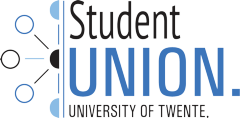engagement Monitor
The engagement monitor is a tool to yearly map the student activities in Enschede. The results of this monitor can be found on this page.
This edition of the Engagement Monitor was filled in by 113 student organisations. For data gathering, the improved format of 2022 was used, which made it easier for the boards to fill in the data, based on data from previous years. This year checks were added to increase the reliability of the data. The response rate increased from 74% to 81%.
Remark: The conclusions mentioned below are derived from self-reported data provided by associations. Consequently, these conclusions are constrained by limitations in reliability and validity.
ACTIVE MEMBERS
The number of active members shows relatively minor variations across different sectors. Smaller associations tend to have a higher percentage of active members. While there are some sector-specific differences, an overall decline in the proportion of active members is noticeable when compared to data from 2021 and 2022. This downward trend is particularly pronounced in the study and world sectors, whereas it is less apparent in the social, sports, and cultural sectors.
INTERNATIONAL STUDENTS
When looking at the graph on the right, it it important to take into account that these are percentages. When looking at it quickly, the social sector seems to have a very high proportion of active EEA members, especially when comparing it to the percentage of active Dutch members. However, there are little EEA members at social associations in general, so therefore this data is not truly represantative. Overall, it can be noted that international students are less often a member of an association, but the international students that are a member of an association are often active, especially regarding students from within the EEA.
COMMITTEES
There is a large difference between the different sectors regarding the study year of the members involved in committees. In the sectors Culture, Sports and World, 5th year students and older make up a significant part of the committee members, whilst in the Other, Social and Study sector, the committees mostly consist of 1st up until 3rd year students, where the 3rd year students make up the largest portion.
But how are these conclusions relevant to you? Have a look at the overall results and compare this to your own organisation. By doing this, you might find certain results that are striking to you, in which you as an organisation differ from the overall results. See whether you can get advice from other organisations or whether you might be able to give advice to other organisations. By doing this, we hope that all of us can make the active student community even better! Please note, that all organisations have individual goals and characteristics, so differences don’t directly imply that something should be changed.
